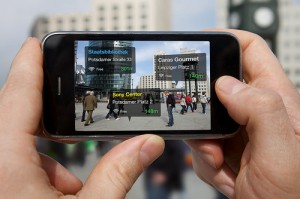The social media and digital marketing space is moving at the speed of unsolicited Facebook changes (I thought that was an awesome analogy, but if it was a little off-base, I meant FAST). There are constantly new ideas, platforms, channels and technological advancements that make marketing more and more exciting and increase the opportunities for businesses to implement really awesome and buzz-worthy campaigns. No longer do we need to spend our marketing budget on a few print ads, a radio campaign and a TV spot during an obscure program on cable.
So, why, then, are Aussie businesses falling so far behind? Why are almost all the noteworthy, barrier-breaking, buzz-creating social/tech/digital campaigns coming from other countries in the world? We could blame it on our agencies, which is a favorite pastime of mine, but I’m not so sure it’s their fault. Do the decision-makers in our companies not have enough confidence in new technologies and social media to try new things? Either way, it’s a sad reflection of our vibrant and tech-savvy nation. We can come up with some of the world’s most notable medical triumphs and more elite athletes per capita than most… but where our talent and smarts in these arenas thrive, they seem to shrivel into non-existence when it comes to creative marketing.
Maybe I’m being harsh. My friends and family would tell you that’s another favorite pastime of mine. But nonetheless, here are five digital marketing / social media/tech trends that Australian businesses should be getting on to RIGHT NOW.

Augmented Reality
Unfortunately, at this stage, this one can be a little on the pricey side, but you can do some seriously cool things with AR technology. You may or may not have heard of some of the bigger campaigns – like Lynx Falling Angels, Transformers and countless car examples. The possibilities are endless, and it’s still new and cool enough to get plenty of PR benefits from implementing a campaign of your own. Here’s a compilation of a few great augmented reality campaigns to inspire you.

Social Commerce
And more specifically, Facebook commerce. I know that there are statistics thrown up all the time about how people don’t trust social media enough to make purchases through it, but first of all, I don’t believe it, and secondly, what they are increasingly going to come to understand is that purchasing via social media is often the same as purchasing via a website. In fact – it is the same in many cases, thanks to iframe functionality.
You may not realize that if you have a shopping cart ability on your website, it’s more than likely you can pull in that functionality straight from your website via iframe to your Facebook page – even easier now that the width of apps has increased to 810px. This may or may not make sense to you, but seriously you should get onto it because people do not want to leave Facebook. If they can purchase your product straight through your Page, the chances are higher that they will. And even if they don’t – it’s unlikely you’ll lose a sale from having it there, so ipso facto, you should just have it there. The more options for people to buy your stuff, the better. I’m extremely passionate about this, so happy to answer questions if you want to get in touch.
Here are some good examples of social commerce in action.

Crowdsourcing
And I don’t even mean in the typical sense of Doritos spending tens of thousands to crowdsource their next advertisement or develop their next flavor. I mean everyday businesses capitalizing on their social media channels to ask their communities for feedback and/or suggestions on product development, marketing campaigns, logos, naming their office pet, who they should hire as their intern, where they should buy their office fruit from… whatever. People have opted to join your business community on Facebook, Twitter, and maybe even Google+ if you’re in that .03%… and yet all you’re doing is broadcasting out the messages you want them to hear. How selfish. Why don’t you ask them what they want? Shape your business according to your customers’ desires, not your own. You might just find you make more money because they feel like they are a part of your company, not just your ‘target market’.
Projection-Mapping
You may or may not have heard about this phenomenon. Basically, it uses a stationary object (often a building) and projects a 3D video onto it, combines it with sound and creates an awesome experience. Because the scale is so large and the 3D experience can be so realistic, it can gain a lot of attention and generate heaps of buzz. Below is a video of one of the only examples I can recall in Sydney (or Australia, for that matter), which was part of the Vivid Sydney festival last year.
You can also see 10 examples of Projection Mapping from around the world courtesy of Mashable.
Kinect-powered technology
This one is relatively new at the moment, but there have been a few great campaigns I’ve come across that have used it. By integrating the Xbox Kinect technology into interactive marketing campaigns, a truly interactive experience is created. What these campaigns can do is react to the movement of people who are interacting with them – even perhaps just walking by – which clearly encourages attention and engagement and generates buzz and PR. Digital Buzz Blog offers a number of examples of Kinect campaigns.
Is your company using any of these social media and technological trends to improve its digital/interactive marketing? No longer should we be focusing our efforts on one-way static advertising. The opportunity (and challenge) is to get people to want to interact with our messaging – not passively tolerate it as it interrupts their day. Social media and technology are giving us the tools we need to involve our customers in our business, make it easier for them to reach out to us, to buy from us and to experience our marketing in a much more interesting and interactive way. So what are you waiting for, Australians? Get on it.
